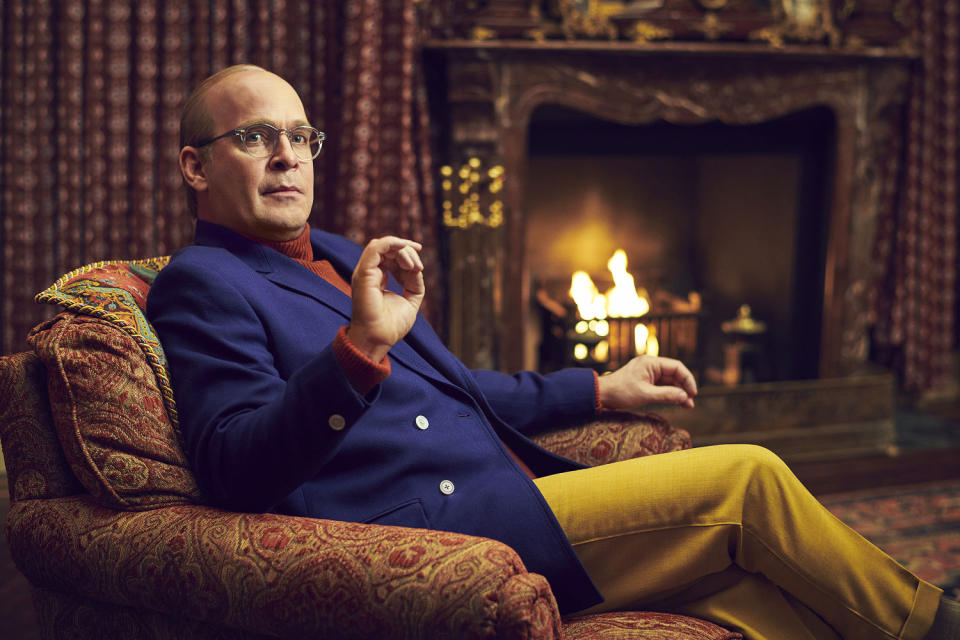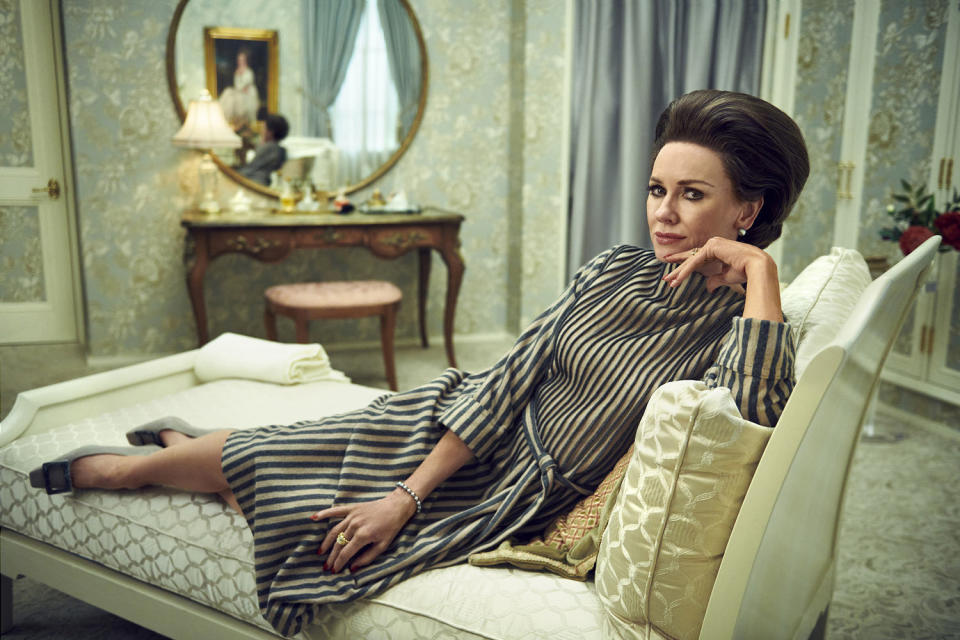What is ‘Feud’ Season 2 about? Inside the true story of Truman Capote and the women he betrayed
- Oops!Something went wrong.Please try again later.
Seven years after its debut season, FX’s “Feud” is back, this time shining a light on the true story of Truman Capote — author of “Breakfast at Tiffany’s” and “In Cold Blood” — and the clique of elite Manhattan women whom he nicknamed his "swans."
Based on Laurence Leamer’s bestselling book, “Capote’s Women: A True Story of Love, Betrayal, and a Swan Song for an Era," the eight-episode anthology series returns Jan. 31 on FX.
The trailer likens the swans to the original "Housewives" of New York, referencing their wealthy and glamorous lifestyles.
The New Orleans-born, Alabama-raised Truman Capote, played by Tom Hollander, finds his way into Manhattan high society, developing close relationships with these women, “only to ultimately betray them by writing a thinly veiled fictionalization of their lives, exposing their most intimate secrets,” according to FX’s official synopsis.

Here's what to know about the true story.
What is the true story that inspired 'Feud: Capote vs. The Swans'?
After the success of his early books, Capote essentially became a celebrity, with access to a glamorous new set. Long story short, "Feud: Capote vs. the Swans" is about Capote's plan to write a book based on the juicy tidbits that his "swans" told him in confidence.
The novel, called "Answered Prayers," was partially written, and partially published. Although never completed, four excerpts of the book were published in Esquire, to grave consequences for Capote's social life.

Because Capote’s stories were so thinly veiled, these socialites — including Barbara Paley, Slim Keith, C.Z. Guest and Lee Radziwill — had their most intimate secrets shared with the world.
They ultimately banded together to expel Capote from high society. As Thomas Fahy writes in the book "Understanding Truman," "Capote's searing indictment of the ultrarich as disillusioned, bitter and cruel alienated him from most of his wealthy friends."
Once his work was revealed and New York’s most powerful women dropped him, he spiraled out of control, further down a path of self-harm and addiction.
"All of a sudden, not one but all of his friends — who had been like his family, because he didn’t really have any family — were not speaking to him; there was literally nowhere for him to go. He was alone drinking, and the phone stopped ringing. He was a man alone on an island,” Ebs Burnough, who directed the documentary "The Capote Tapes", told Vanity Fair.
Who were the 'Swans,' exactly?
Leamer's book names Barbara “Babe” Paley, Gloria Guinness, Marella Agnelli, Slim Keith, Pamela Churchill, C. Z. Guest and Lee Radziwill, the sister of Jacqueline Onassis, as Capote's former posse of wealthy Manhattanites.
What happens in the story 'La Côte Basque, 1965'?
"La Côte Basque, 1965" was an excerpt from Capote's planned novel "Answered Prayers," published in Esquire, which led to the unraveling of Capote's friend group — or, at least, his connection to them.
In the story, Lady Ina Coolbirth, believed to represent Slim Keith, talks through rumors and scandals with her friend Jonesy at a Manhattan restaurant, La Côte Basque.
Lady Ina makes cruel comments and overshares about the friends in her close circle, gossiping about what resembles a real 1955 case that rollicked the upper echelon. Ann Woodward fatally shot her banking heir husband, claiming she mistook him for a burglar. She was exonerated.
The story wraps when Lady Ina details the affair Sidney Dillon, based on Bill Paley, had with a politician's wife. Babe Paley never spoke to Capote again.

What happened to 'Answered Prayers'?
Capote did not finish "Answered Prayers" before he died in 1984. He had been working on the book since 1958.
The published version includes the three excerpts published in Esquire in the late 80's: "La Côte Basque, 1965," “Unspoiled Monsters” and “Kate McCloud.”
A finished manuscript of Capote's tell-all has never been found, although Joanne Carson, who lived with Capote near the end of his life, says she saw several more chapters of his that went unpublished, according to Vanity Fair.
This article was originally published on TODAY.com

